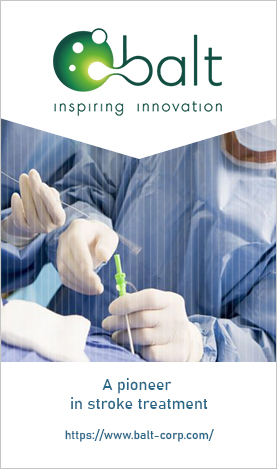MRI in Hyperacute Stroke
Early Experience
DOI:
https://doi.org/10.32896/cvns.v5n2.1-8Keywords:
Stroke, Acute, Magnetic Resonance Imaging, MRI, Putra Acute Stroke ProtocolAbstract
Background: In many institutions, computed tomography is the preferred neuroimaging modality for acute stroke (CT). MRI, on the other hand, is more sensitive in detecting infarct core. We present our early experience adopting MRI-first policy, using Putra Acute Stroke Protocol with 8-minute first 3 sequences, for hyperacute stroke.
Methods: We retrospectively reviewed our early 6 months experience between June until Dec 2020. All hyperacute stroke cases who had MRI first and the door to needle (DTN) were evaluated.
Results: There were total of 124 cases with 11 haemorrhagic stroke (8.9%) and 6 cases stroke mimics (4%). There were total of 105 cases of acute stroke, who had MRI first, where, 18 were thrombolysed (17.1%) while 8 cases had thrombectomy (7.6%). Fourteen were thrombolysed within 60 minutes (77.8%). DTN time range between 6 to 78 minutes with total accumulated time of 716 minutes, giving an average DTN of 42 minutes.
Conclusion: Our experience shows there is no significant overall delay in DTN with higher percentage of thrombolysis rate. MRI-first policy, adopting Putra Acute Stroke Protocol, helps to achieve early and confident decision after the 8-minute scan. The stroke mimics and haemorrhagic stroke were excluded effectively. A more comprehensive study over a longer period to include other parameters might benefit the treatment decision for hyperacute stroke.
References
Fiebach JB, Schellinger PD, Jansen O, Meyer M, Wilde P, Bender J, et al. CT and Diffusion-Weighted MR Imaging in Randomized Order Diffusion-Weighted Imaging Results in Higher Accuracy and Lower Interpreter Variability in the Diagnosis of Hyperacute Ischemic Stroke. Stroke. 2002;33(9):2206–2210. doi: 10.1161/01.STR.0000026864.20339.CB.
Lansberg MG, Albers GW, Beaulieu C, Marks MP. Comparison of diffusion-weighted MRI and CT in acute stroke. Neurology. 2000;54(8):1557–1561. doi: 10.1212/WNL.54.8.1557.
Goyal M, Ospel JM, Menon B, Almekhlafi M, Jayaraman M, Fiehler J, et al. Challenging the Ischemic Core Concept in Acute Ischemic Stroke Imaging. Stroke. 2020;51(10):3147–3155. doi: 10.1161/STROKEAHA.120.030620.
Thomalla G, Simonsen CZ, Boutitie F, Andersen G, Berthezene Y, Cheng B, et al. MRI-guided thrombolysis for stroke with unknown time of onset. New England Journal of Medicine. 2018 Aug 16;379(7):611-22. doi: 10.1056/NEJMoa1804355
Sølling C, Ashkanian M, Hjort N, Gyldensted C, Andersen G, Østergaard L, et al. Feasibility and logistics of MRI before thrombolytic treatment. Acta Neurol Scand. 2009;120(3):143–149. doi: 10.1111/j.1600-0404.2008.01136.x.
Sablot D, Gaillard N, Colas C, Smadja P, Gely C, Dutray A, et al. Results of a 1-year quality-improvement process to reduce door-to-needle time in acute ischemic stroke with MRI screening. Rev Neurol. 2017;173(1-2):47-54. doi: 10.1016/j.neurol.2016.12.032.
Sablot D, Ion I, Khlifa K, Faouil G, Leibinger F, Gaillard N, et al. Target Door-to-Needle Time for Tissue Plasminogen Activator Treatment with Magnetic Resonance Imaging Screening Can Be Reduced to 45 min. Cerebrovasc Dis. 2018;45(5-6):245-251. doi: 10.1159/000489568.
Chiu LQ, Quek DYJ, Salihan RB, Ng WM, Othman RB, Lee CH, et al. ACT-FAST: a quality improvement project to increase the percentage of acute stroke patients receiving intravenous thrombolysis within 60 minutes of arrival at the emergency department. Singapore Med J. 2021;62(9):476-481. doi: 10.11622/smedj.2020040.
Kamal N, Shand E, Swanson R, Hill MD, Jeerakathil T, Imoukhuede O, et al. Reducing Door-to-Needle Times for Ischaemic Stroke to a Median of 30 Minutes at a Community Hospital. Can J Neurol Sci. 2019;46(1):51-56. doi: 10.1017/cjn.2018.368.
Muda AS, Khafiz MFA, Yaakob MNM, Rahim EA, Mahmood MK, Noh MSFM et al. Putra Acute Stroke Protocol. CVNS. 2021;3(4):23-25. doi: 10.32896/cvns.v3n4.12-14.
Sakamoto et al Chia PK, Mohamad NA, Mat LNI, Itam@Ismail I, Khan AHKY, Loh WC, et al. Regional Emergency Stroke Quick-Response (RESQ) Network: A Proposed Paradigm of Malaysia Stroke Care Services. Malaysian J Med Health Sci. 2020;16(4):353-361.
Macha K, Hoelter P, Siedler G, Knott M, Schwab S, Doerfler A, et al. Multimodal CT or MRI for IV thrombolysis in ischemic stroke with unknown time of onset. Neurology. 2020;95(22):e2954-e2964. doi: 10.1212/WNL.0000000000011059.
Basri H, Puvanarajah S, Yahya WNNW, Kee HF, Aziz ZA, Ibrahim KA, et al. Clinical Practice Guidelines: Management of Ischaemic stroke. 3rd ed. 2020. CVNS 2021;3(1):1-155. doi: 10.32896/cvns.v3n1.1-155.
Published
How to Cite
Issue
Section
License

This work is licensed under a Creative Commons Attribution-ShareAlike 4.0 International License.







